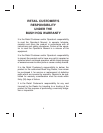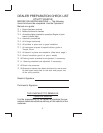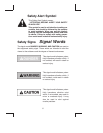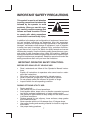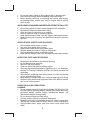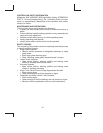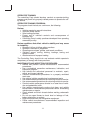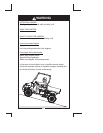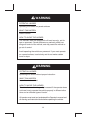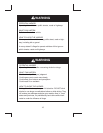
• Reduce loads and speed when operating over rough or hilly ter-
rain.
• Use low vehicle speeds when operating with cargo box loads.
Heavy loads will affect steering, braking, stability, and overall
handling of the vehicle. Limit loads to those that can be safely
controlled.
• Allow for increased braking distance.
UNLOADING:
• Stop vehicle on level ground, set parking brake before raising
cargo box.
• Avoid unloading or dumping on slopes, hills or inclines.
MANUALLY RAISED CARGO BOX UNITS:
• Unload manual lift cargo box before raising cargo box by
hand.
• Securely lock manual support lift rod before working beneath
raised cargo box.
• Fully lower cargo box and securely re-latch lift rod before operat-
ing vehicle.
OPTIONAL ELECTRIC POWER LIFT CARGO BOX UNITS:
• Operate switch while seated in operator seat.
• Keep body parts away from cargo box and all bystanders away
from vehicle.
• Do not dump or unload vehicle parked on an incline, slopes, hills,
or with rear wheels at an edge of a drop-off. The cargo box
weight may shift and cause the vehicle to tip or rollover.
• Fully lower cargo box before operating vehicle.
TOWING OPERATIONS:
• Do not exceed vehicle’s Gross Vehicle Weight (GVW) rating. This
includes vehicle operating weight, material load (cargo box load),
personnel weight, options weight, accessories weight, and attach-
ment weight (towing loads).
• Always use approved rear hitch point.
• Do not tow a load weight (trailer weight and cargo weight) that
exceeds towing weight rating.
• Do not exceed the tongue weight rating.
• Never exceed 16 km/h (10 mph)when towing loads. Use slow
speeds to maintain control of vehicle and towing load.
• Allow for increased braking distance from towed load weight.
• Do not tow heavy loads on slopes greater than 5 degree incline.
• Heavy towed equipment may jackknife and cause utility vehicle
to overturn when going downhill or turning.
9




